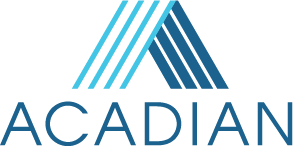Acadian Asset Management
Acadian Asset Management is a financial advisor firm with a large team of on-staff financial advisors managing billions in client assets. Its headquarters are located in Boston, but you’ll find secondary branches in London, Singapore and Sydney. The fee-based firm only works with institutional clients, meaning it does not offer services for individuals. It also runs its own investment funds, including hedge funds.
If you're looking for an advisor firm that works with individual clients, SmartAsset's financial advisor matching tool can help you find options in your area.
Acadian Asset Management Background
Acadian Asset Management has been providing investment advice since 1986. According to the firm’s Form ADV, “BrightSphere Affiliate Holdings, LLC, part of the BrightSphere group owns 100% of the Class A (voting) interest of Acadian while an Acadian Key Employee Limited Partnership (“Acadian KELP LP”) owns 100% of the Class B interest which provides financial participation in the profitability of the firm. The Acadian KELP LP is comprised of the majority of senior staff and senior investment team members.”
The firm employs many advisors, some of whom have earned advisory certifications such as chartered financial analyst (CFA) and chartered alternative investment analyst (CAIA).
Acadian Asset Management Client Types and Minimum Account Sizes
Acadian Asset Management works with over 300 clients, roughly a third of which are its own investment funds. The firm also manages assets for investment companies, pension and profit-sharing plans, charitable organizations, government entities, sovereign wealth funds, corporations, foreign retirement plans and Taft-Hartley plans. Acadian currently doesn’t have any individual clients.
Acadian Asset Management generally requires a minimum account size of $100 million for separately managed accounts (SMAs), although it may decide to accept smaller accounts at its discretion. For those interested in investing in a fund that Acadian advises, minimum investment amounts can vary. You can find these minimums in the funds’ prospectuses.
Services Offered by Acadian Asset Management
Acadian Asset Management provides investment management to a wide range of clients. It offers a deep catalogue of different investment strategies within these services. Here’s a breakdown:
- Investment portfolio management
- Risk-adjusted investment planning
- Active management
- Customized to clients’ needs
- In-house risk modeling, return forecasts and transaction cost estimates
- Responsible investing
- Portfolio monitoring
Acadian Asset Management Investing Philosophy
Acadian Asset Management relies on automated, quantitative analyses to help inform its investment decisions. When considering equities, the firm maintains a database of tens of thousands of potential securities. It then uses proprietary software to generate expected returns several times per day and ranks these possible investments accordingly. From there, advisors will construct portfolios by combining this information with factors specific to each client, like their risk tolerance and liquidity needs.
The firm uses four main investment strategies:
- Core Equity: Strategies that use quantitative analysis to optimize a portfolio of equities tailored to a client’s needs.
- Alternative Strategies: This is similar to the Core Equity strategy, but it involves long-short practices. This is the act of buying and holding onto equities you believe will increase in value and short-selling equities you believe will decrease in value.
- Managed Volatility: This is a strategy that seeks to exploit a mispricing of risk within a cross section of equities. Low-risk equities are the centerpiece of portfolios using this strategy.
- Multi-Asset: A strategy in which advisors construct a portfolio containing several diversified asset classes including equity, fixed-income, currencies, commodities and more.
Fees Under Acadian Asset Management
For its investment advisory services, Acadian charges fees as a percentage of each client’s assets under management (AUM). These charges are broken down by which of the firm’s four overarching investment strategies is beind used. Annual fees for each of Acadian’s large-scale strategies adhere to these rates:
- Core Equity: 0.15% - 1.50%
- Alternative Strategies: 0.60% - 1.50%
- Managed Volatility: 0.20% - 0.75%
- Multi-Asset: 1.00% - 1.50%
What to Watch Out For
Acadian Asset Management reported no disclosures on its most recent Form ADV, giving it a clean legal and regulatory record.
One thing to note: for certain client accounts, Acadian Asset Management charges performance-based fees. These fees, which are negotiated on an individual basis, can induce potential conflicts of interest. One is that managers have an incentive to take a more speculative trading approach. Another is that managers will favor performance fee accounts over other accounts when it comes to investment opportunities. That said, Acadian is legally bound by it fiduciary duty to act in clients’ best interests at all times.
Opening an Account With Acadian Asset Management
To get in touch with Acadian Asset Management, you can call the firm’s only U.S. office in Boston at (617) 850-3500 or send an email to info@acadian-asset.com. You can then speak with a firm representative who can advise you on if Acadian is the right firm for you.
All information is accurate as of the writing of this article.
Tips for Becoming an Investor
- SmartAsset’s free tool matches you with up to three financial advisors who serve your area, and you can interview your advisor matches at no cost to decide which one is right for you. If you’re ready to find an advisor who can help you achieve your financial goals, get started now.
- There are a number of investing principles that are important to understand if you want to become a successful investor. Possibly the most prominent among these is your portfolio’s asset allocation, as this allows you to put together investments according to a specific risk tolerance. For more information, check out SmartAsset’s asset allocation calculator.

